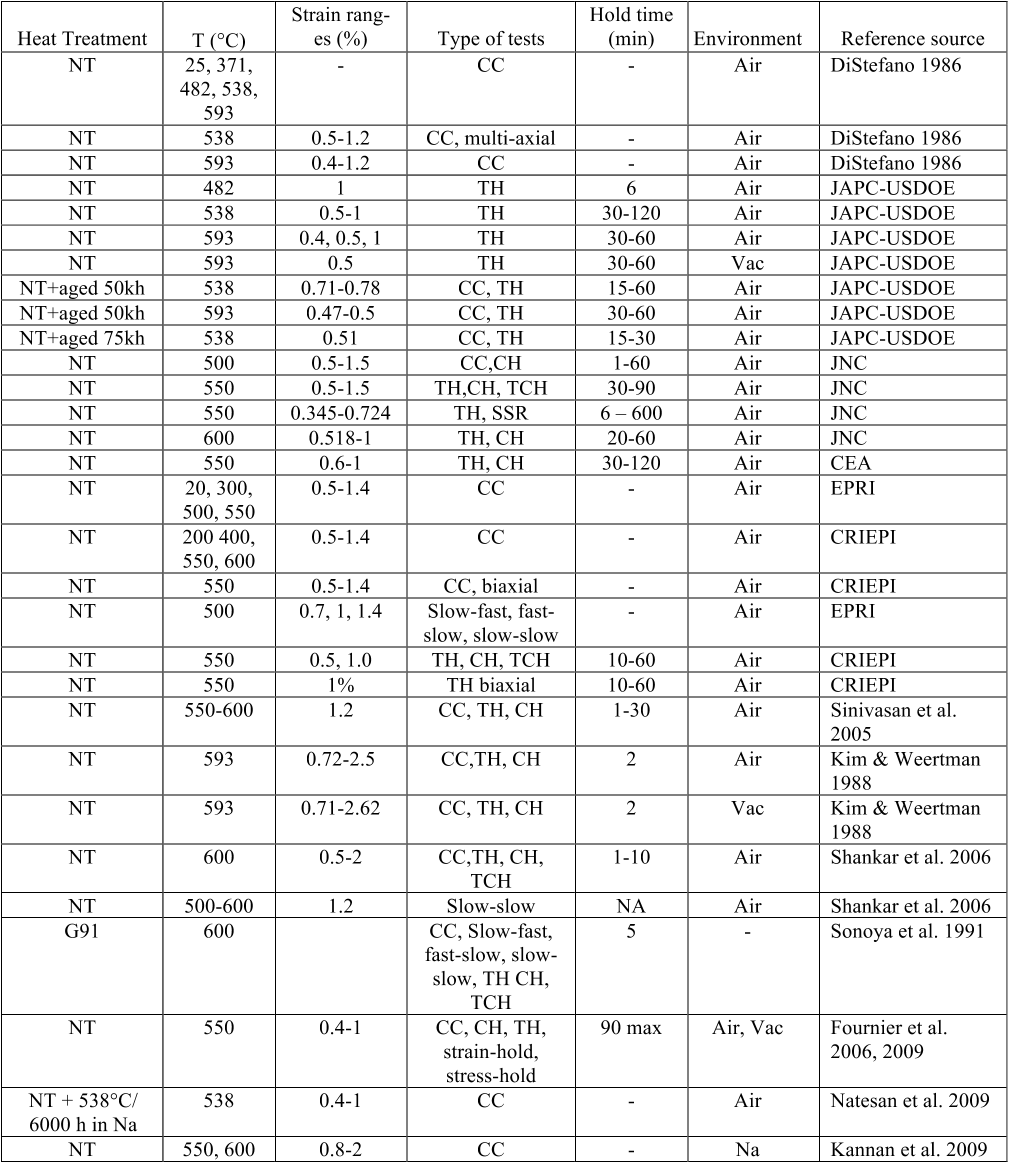
Resolution of Qualification Issues
for Existing Structural Materials
Nuclear Engineering
Division

About Argonne National
Laboratory
Argonne is a U.S. Department of Energy laboratory managed by UChicago Argonne, LLC
under contract DE-AC02-06CH11357. The Laboratory’s main facility is outside Chicago,
at 9700 South Cass Avenue, Argonne, Illinois 60439. For information about Argonne
and its pioneering science and technology programs, see www.anl.gov.
Availability
of This
Report
This report is available, at no cost, at http://www.osti.gov/bridge. It is also available
on paper to the U.S. Department of Energy and its contractors, for a processing fee, from:
U.S. Department of Energy
Office of Scientific and Technical Information
P.O. Box 62
Oak Ridge, TN 37831-0062
phone (865) 576-8401
fax (865) 576-5728
reports@adonis.osti.gov
Disclaimer
This report was prepared as an account of work sponsored by an agency of the United States Government. Neither the United States
Government nor any agency thereof, nor UChicago Argonne, LLC, nor any of their employees or officers, makes any warranty, express
or implied, or assumes any legal liability or responsibility for the accuracy, completeness, or usefulness of any information, apparatus,
product, or process disclosed, or represents that its use would not infringe privately owned rights. Reference herein to any specific
commercial product, process, or service by trade name, trademark, manufacturer, or otherwise, does not necessarily constitute or imply
its endorsement, recommendation, or favoring by the United States Government or any agency thereof. The views and opinions of
document authors expressed herein do not necessarily state or reflect those of the United States Government or any agency thereof,
Argonne National Laboratory, or UChicago Argonne, LLC.

Resolution of Qualification Issues
for Existing Structural Materials
Prepared
for
U.S. Department
of Energy
Reactor
Campaign
K. Natesan, Meimei
Li, and S. Majumdar
Argonne National
Laboratory
and
R. K. Nanstad and T. -L. Sham
Oak Ridge National Laboratory
September
2009

Resolution of Qualification Issues for Existing Structural Materials
September 30, 2009
i
EXECUTIVE SUMMARY
This report gives a detailed assessment of several key technical issues that needs resolu-
tion for the existing structural materials with emphasis on application in liquid metal reactors
(LMRs), in particular, sodium cooled fast reactors. The work is a combined effort between Ar-
gonne National Laboratory (ANL) and Oak Ridge National Laboratory (ORNL) with ANL as the
technical lead, as part of Advanced Structural Materials Program for the Advanced Fuel Cycle
Initiative (AFCI) Reactor Campaign. The report is the second deliverable in FY09
(M2505050201) under the work package “Advanced Materials Code Qualification”.
The overall objective of the Advanced Materials Code Qualification project is to evaluate
the key technical requirements for the qualification of currently available and future advanced
materials for application in sodium reactor systems and the resolution of issues that the U.S. Nu-
clear Regulatory Commission (NRC) has raised in the past on structural materials in support of
the design and licensing of the LMR. Advanced materials are a critical element in the develop-
ment of sodium reactor technologies. Enhanced materials performance not only improves safety
margins and provides design flexibility, but also is essential for the economics of future ad-
vanced sodium reactors. Qualification and licensing of advanced materials are prominent needs
for developing and implementing advanced sodium reactor technologies. However, the devel-
opment of sufficient database and qualification of these materials for application in LMRs
require considerable amount of time and resources. In the meantime, the currently available ma-
terials will be used in the early development of fast reactors.
Nuclear structural component designs in the U.S. comply with the ASME Boiler and
Pressure Vessel Code Section III (Rules for Construction of Nuclear Facility Components) and
the NRC grants licensing. As the LMR will operate at higher temperatures than the current light
water reactors (LWRs), the design of elevated-temperature components must comply with
ASME Section III Subsection NH (Class 1 Components in Elevated Temperature Service). As-
sessment of materials performance issues and high temperature design methodology issues
pertinent to the LMR were presented in an earlier report (Natesan et al. 2008). In a subsequent
report (Majumdar et al. 2009), we addressed the needs in high temperature methodologies for de-
sign of various high temperature components in sodium cooled fast reactor.
The present report addresses several key technical issues for the currently available struc-
tural materials such as Type 304 and 316 austenitic stainless steels and ferritic steels such as
2.25Cr-1Mo and modified 9Cr-1Mo. The 60-year design life for the LMR presents a significant
challenge to the development of database, extrapolation/prediction of long-term performance,
and high temperature structural design methodology. The current Subsection NH is applicable to
the design life only up to 34 years. No experimental data contain test durations of 525,000
hours, and it is impractical to conduct such long-term tests in any types of testing. So far the
longest creep tests for Grade 91 and Grade 92 steels have run up to 100,000 hours. It has been
noted that there is a large drop in creep rupture strength in long-term tests for these high-Cr
creep-resistant steels, which may result in overestimation of the long-term creep strength and al-
lowable stress. The report addresses in detail the need for a mechanistic understanding of the
structural materials, from the standpoint of the effects of thermal aging, creep deformation, creep
fracture, fatigue and creep-fatigue, creep-fatigue predictive models, fatigue and creep crack

Resolution of Qualification Issues for Existing Structural Materials
September 30, 2009
ii
growth, and fracture toughness. Based on an in-depth assessment of the available data and
mechanistic understanding, key technical issues are identified and discussed for each of the
property areas. Furthermore, we have proposed viable approaches to resolve the issues and pri-
oritized our recommendations.




















